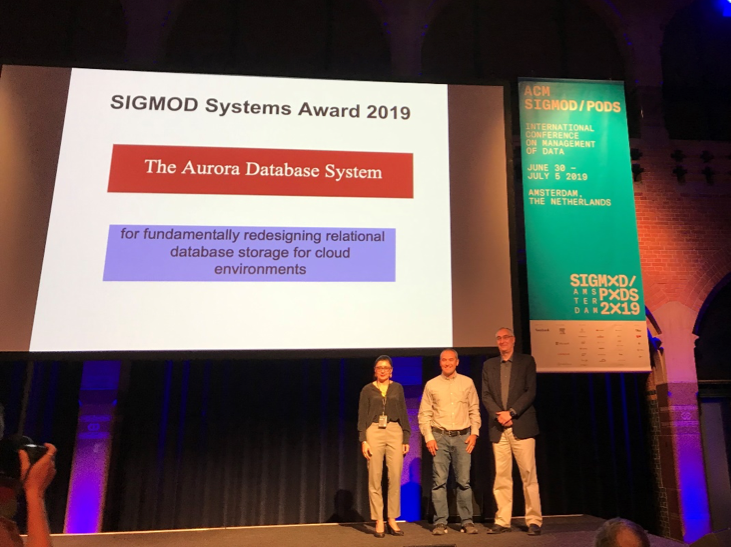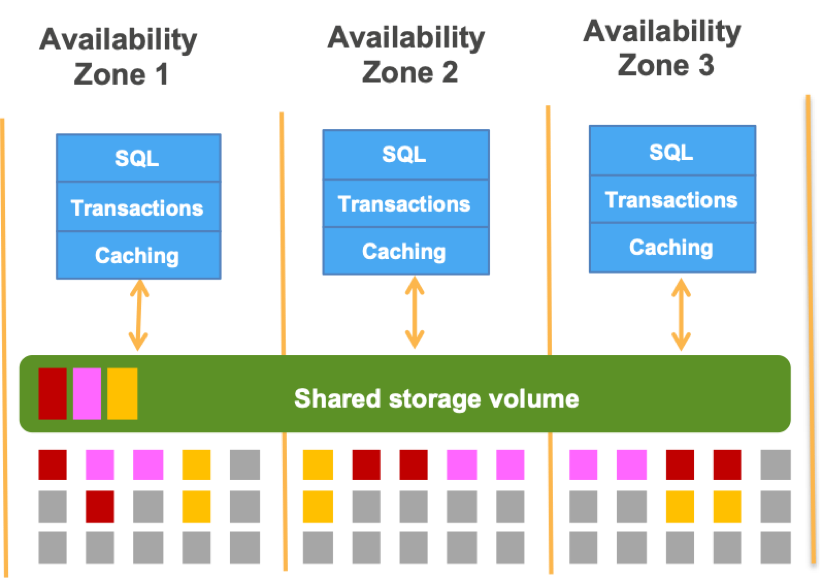Amazon Aurora development team wins the 2019 ACM SIGMOD Systems Award

A few months ago, I wrote the post "Amazon Aurora ascendant: How we designed acloud-native relational database," and now I'm excited to share some news about the people behind the service. This week, the developers of Amazon Aurora have won the 2019 Association for Computing Machinery's (ACM) Special Interest Group on Management of Data (SIGMOD) Systems Award. The award recognizes "an individual or set of individuals for the development of a software or hardware system whose technical contributions have had significant impact on the theory or practice of large-scale data management systems."
SIGMOD is a community of software developers, academic and industrial researchers, practitioners, and users specializing in large-scale data management problems and databases. Each year the group presents awards to recognize significant contributions in the field of data management. This year, SIGMOD has chosen the developers of the Amazon Aurora database system as the recipients of the 2019 ACM SIGMOD Systems Award for fundamentally redesigning relational database storage for cloud environments.
This year's Systems Award was presented this week at the annual ACM SIGMOD Conference, where researchers and practitioners got together to explore cutting edge ideas. The Aurora developers accepting the award (in my hometown of Amsterdam!) also shared a presentation about Aurora architectural innovation. This wasn't the first time Aurora has made an appearance at the ACM SIGMOD Conference. AWS has presented two papers at the conference about Aurora architecture, "Amazon Aurora: Design Considerations for High Throughput Cloud" in 2017 and "Amazon Aurora: On Avoiding Distributed Consensus for I/Os, Commits, and Membership Changes," in 2018.

Relational databases reimagined We designed Aurora as a cloud-native relational database that gives customers the performance, availability, and scalability to meet the needs of their most demanding internet workloads. In designing Aurora, we preserved the core transactional consistency strengths of relational databases but embraced new ideas to build a database that is remarkably scalable, performant, and resilient. Aurora's architectural innovations include:
- A purpose-built, scale-out, self-healing, multitenant, database-optimized storage layer that provides resiliency and availability to support modern workloads without sacrificing performance
- A reconceptualized database stack that decomposes the system into its fundamental building blocks, such as compute, logging, caching, and storage, and offloads the caching and logging layers to storage to reduce I/O and improve performance
- Several first-of-their kind features that make it easier to manage your database, such as:
- Read scalability, providing 15 read replicas across multiple availability zones to achieve higher performance and availability
- Continuous backups and point-in-time restore for durability and fast recovery
- Fast database cloning with copy-on-write when pages are modified, to speed up application development, testing, and database updates
- Backtrack as a way to quickly bring the database to a particular point in time without having to do a full restore to recover from user errors

Industry adoption We are excited to see the broad adoption of Aurora design principles in both the academic and developer community. Aurora is the fastest growing service in the history of AWS, and we're honored to receive the ACM SIGMOD Systems Award in recognition of its innovation and impact on the industry. There are many more relational database innovations to come as we continue to build on Aurora's core. I invite you to learn more about Aurora by visiting the Amazon Aurora page.